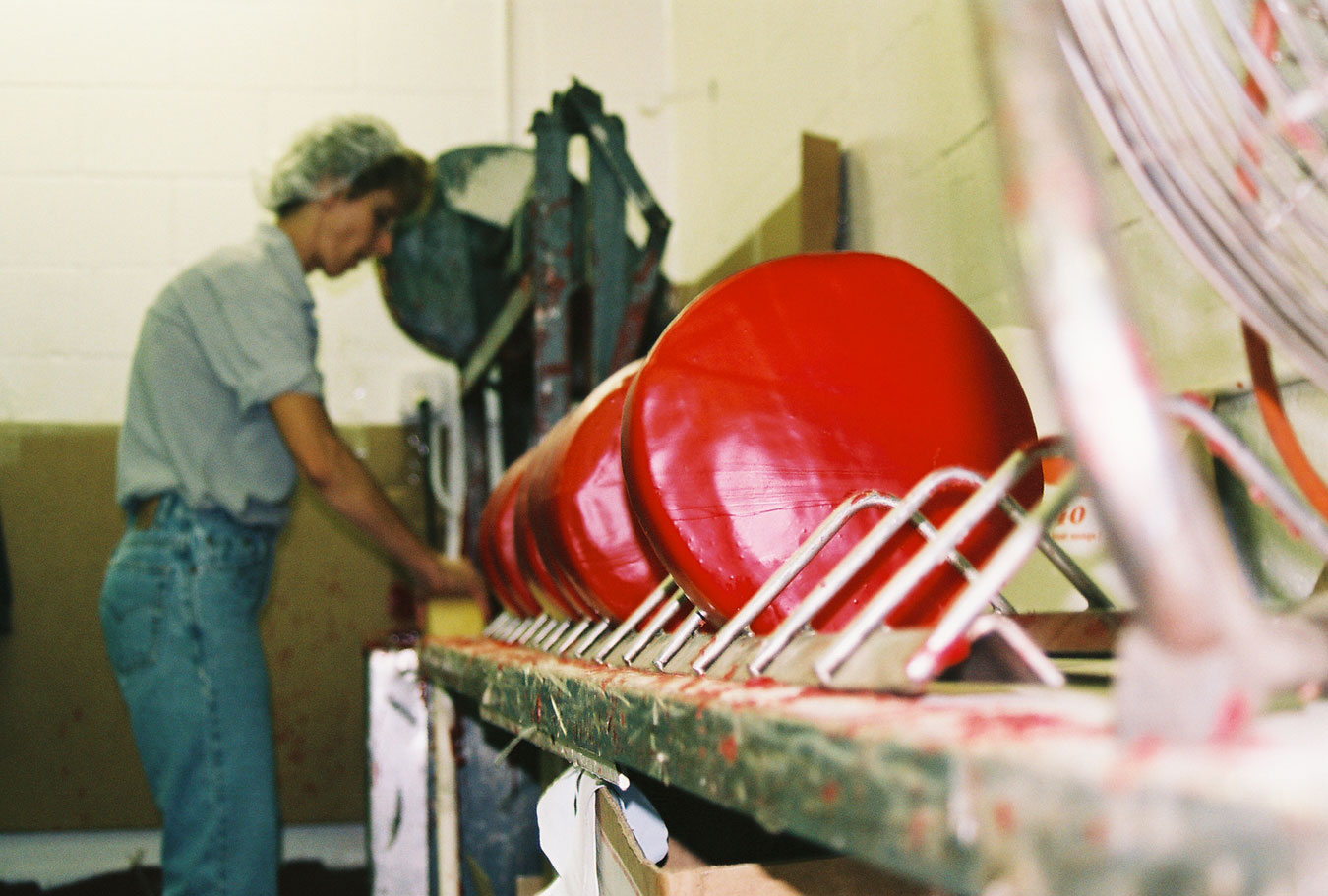 |
|
 |
| Aged to Perfection |
| Pop Art |
| Bottling Up Success |
| Edible Art |
| Aged to Perfection: Four Generations of Cheesemaking | ||||||
| Continued... | ||||||
Today, a door separates store from factory at the La Valle cheese plant. Decades ago, when Sam Cook ran the family business, the swinging door served as a passageway between home and factory. “I was always out in the plant because growing up, the cheese factory and the house were connected,” Cook said, the dairyland memory accentuated by a thick Midwestern accent. “Ya know,” he continued, “every morning at breakfast I’d be sitting there and the door would be opening and shutting, and my dad would be in and out of the plant and there was always that activity going on.” Unlike his peers, Cook never aspired to become an astronaut or professional baseball player—though he did dabble with the idea of becoming an attorney. However, the cheese plant always captured his fancy, and he mimicked his father’s every move. “Of course I always wanted to be a cheesemaker—I was always out there in the plant, volunteering to do things,” he said. “I’d take the trier and stick it right through the wax, pull it out, take the plug and then stick it back in there. You know, I’d see my dad doing that and I’d drive him absolutely crazy because he’d go to sell the cheese and it would be full of holes.”
In cheese-making lexicon, a trier is a tube-like, metal instrument used to core cheeses for sampling. But if dealing with Cook as a child proved trying at times, Sam Cook said he has full confidence in his son today. “I'd say he's the top [Wisconsin] cheesemaker,” he said. “In the first place, he's doing a good job. In the second place, he's our son.” “We’re very proud of him,” added Sid’s mother Merna, whose family started one of the first cheese plants in Vernon County in the 1890s. In the eyes of the Cook family, tradition and heritage play a key role in the art of cheesemaking. “Even though there are a lot of people starting up cheese businesses, they don’t have the flavor memory and aren’t familiar with the science of it to make subtle adjustments in texture or flavor,” Cook said. “It’s really just a depth of knowledge that makes it happen.” But at a basic level, he said over the thunder of machinery, cheesemaking starts with fresh cow, sheep or goat milk, as well as mixed milk. “First, we pasteurize the sheep's milk and add cultures to the milk and ripen it,” he said of his famed Black Sheep Truffle cheese, which won first place at the 2006 American Cheese Society Competition. In one day, Cook said the plant uses about 12,000 pounds of sheep milk to produce the variety, which accounts for nearly one quarter of an astonishing 60,000 to 70,000 pounds of milk processed daily at two of three Carr Valley Cheese factories. The culturing process creates a warm, damp factory environment, emitting a sweet scent that hangs in the humid air. To culture the milk, factory workers heat pasteurized milk in a vat with starter bacteria, promoting fermentation and thereby growth of lactic acid. Depending on the flavor and acidity of the cheese, the bacteria added may either produce lactic acid alone or other compounds. Specific culturing processes are responsible for producing “eyes”—holes—in cheese. Some bacterial compounds react with the milk to create pockets of gas, creating bubbles as with Swiss cheese. Cook continued the tour of the plant with the eagerness of a first timer, dipping into a vat of fresh curds for a sample. Punctuating a wide grin, Cook explained the next step in cheesemaking. “We add enzymes at the correct pH and coagulate. Then, we cut the milk with wire knives and heat to a slow the culture growth,” he said. Nearby, four factory workers clad in blue jumpsuits and hairnets measured and pressed the freshly coagulated curds into 12-pound wheels. The enzyme Cook referenced, chymosin, is commonly known as rennet—though this may vary depending on the type of cheese. |
||||||
About Us | Contact Us | Business Partners | Archives | Sitemap
Copyright 2007 Curb Magazine
